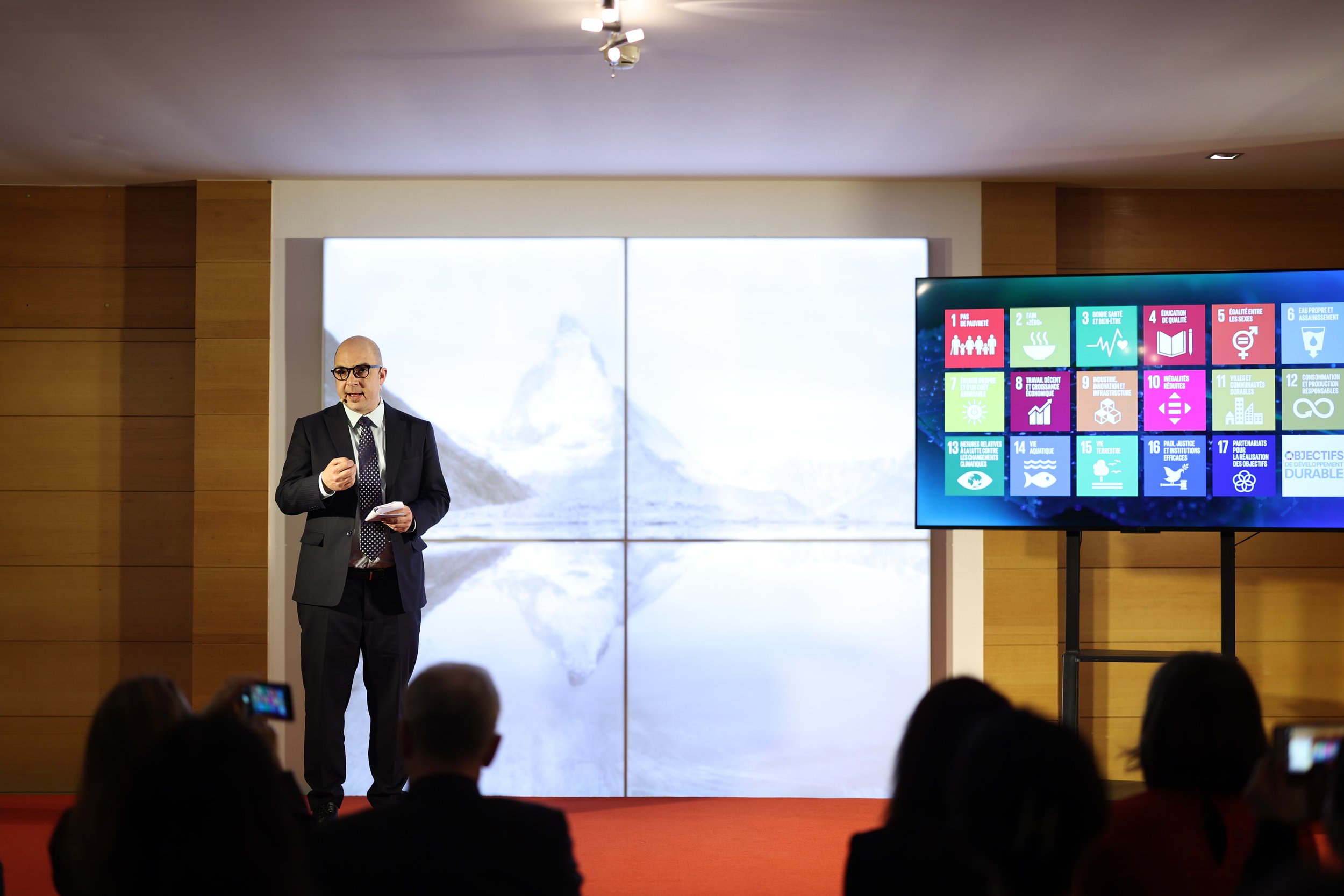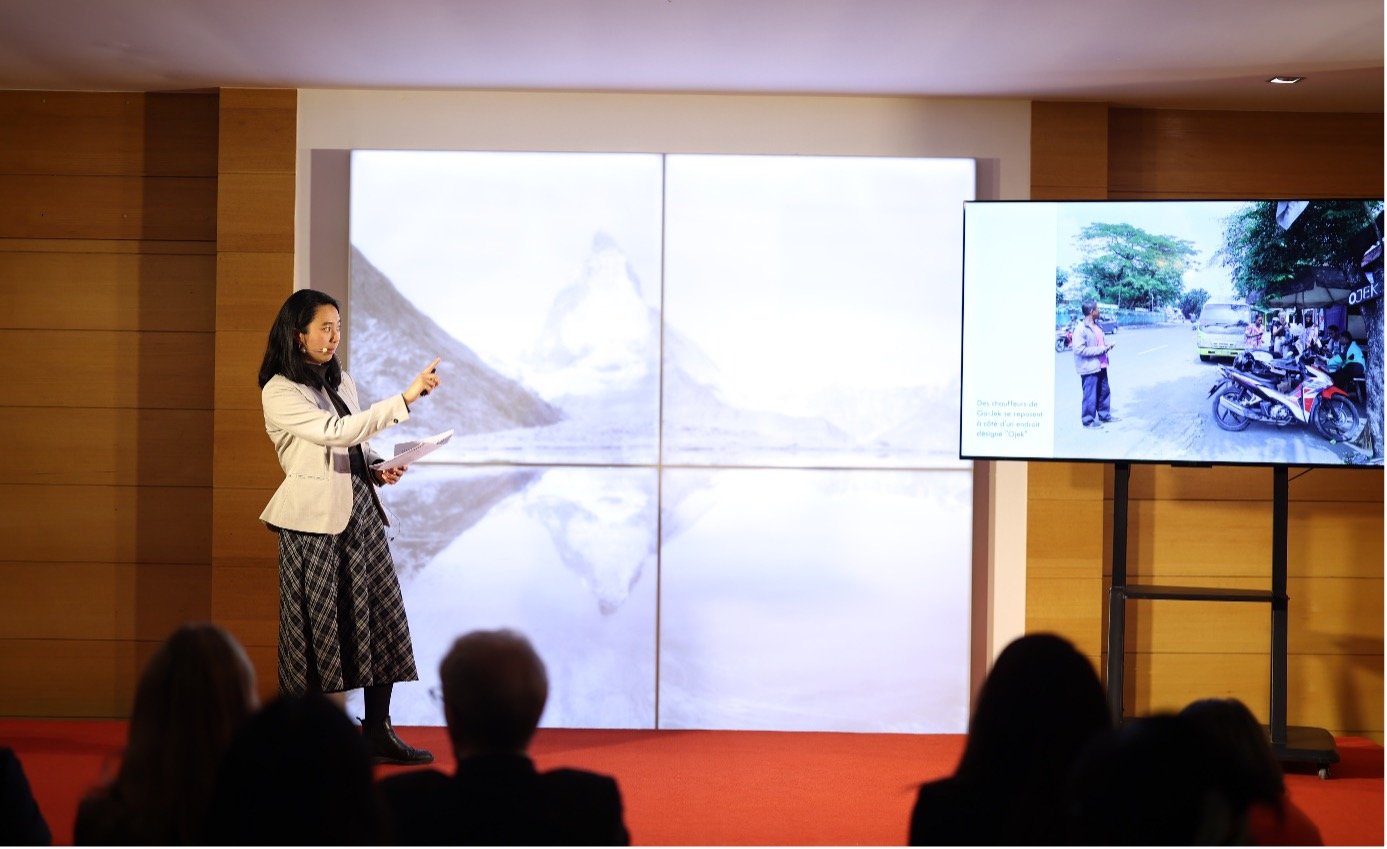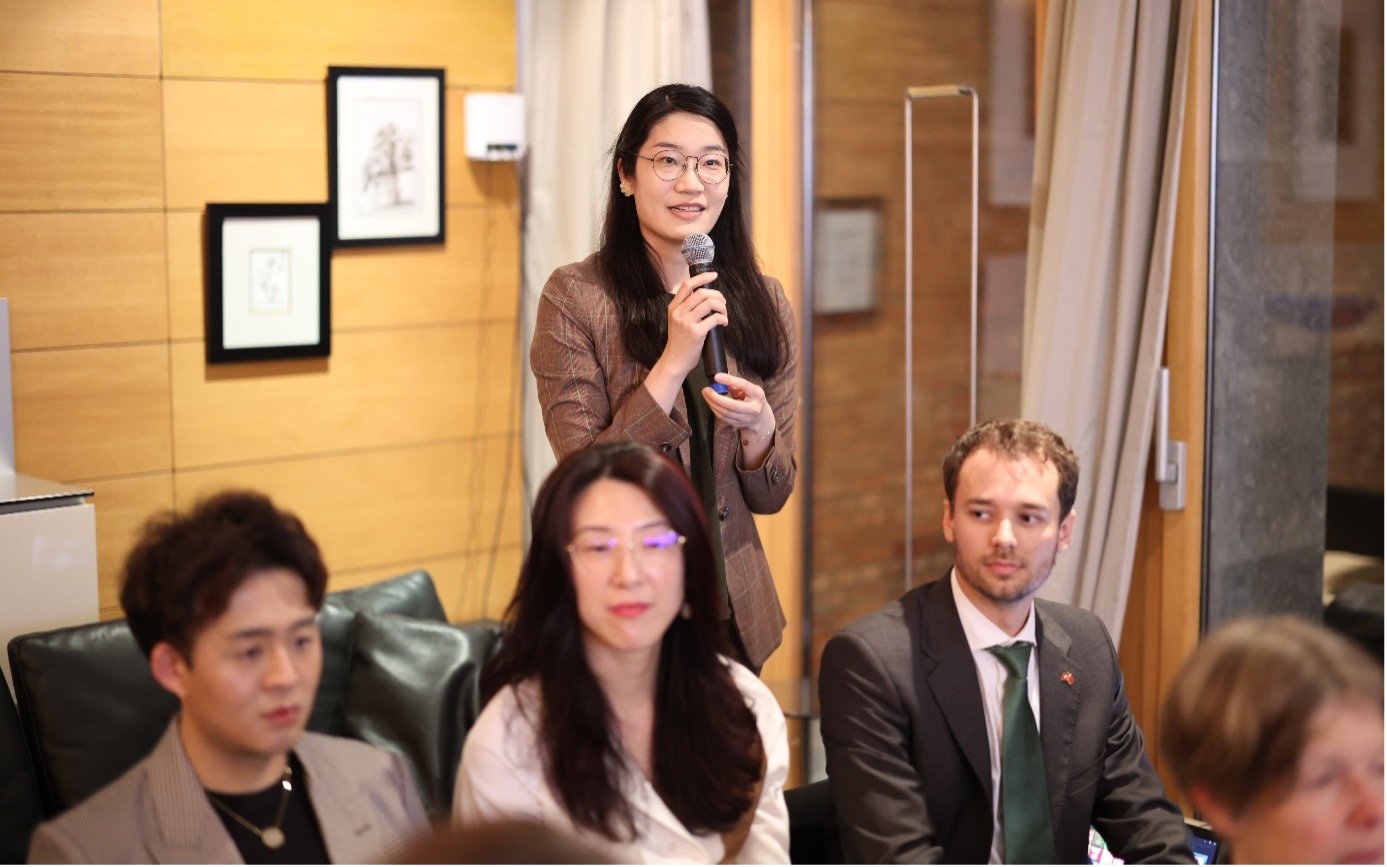Par Sandro Marcotullio, Ambassade de Suisse en Chine
Jeudi 24 mars 2022, un public animé a participé à la résidence de l’Ambassadeur de Suisse et en ligne à notre événement du Mois de la francophonie pour découvrir comment les Objectifs de Développement Durable (ODD) peuvent être atteints grâce à l'innovation. Cette édition spéciale du Café des Sciences, entièrement en français, a été organisée par l’ambassade de Suisse en Chine avec le soutien de Swissnex.
Des intervenants de cinq pays différents (Italie, Chine, Suisse, Belgique et France) ont discuté de nouvelles approches ainsi que de leurs activités dans le contexte de la Chine contemporaine.
L’événement a été ouvert par Bernardino Regazzoni, Ambassadeur de Suisse en Chine et Président du Groupe des Ambassadeurs Francophones qui a souligné l’importance de la langue française en Chine ainsi que l’action politique de l’Organisation Internationale de la Francophonie autour de valeurs telles le développement durable, la promotion de l’égalité et la paix. Valeurs que on retrouve aussi parmi les 17 Objectifs de Développement Durable établis par l’Organisation des Nations Unies.
L’Ambassadeur de Suisse en Chine Bernardino Regazzoni pendant son discours de bienvenue
La conférence a été modérée par Didier Vuarnoz, chef adjoint de la science, la technologie, l’éducation, l’innovation et la santé à l’Ambassade de Suisse en Chine, qui, après une introduction sur les ODD, a donné la parole à Ippolita Gallo, enseignante atelierista auprès de l’école italienne de Pékin. Elle a présenté l'approche innovante qui place les filles et les garçons - les plus jeunes citoyens - au centre d'une expérience éducative collective. L’école italienne de Pékin met l'accent sur l'éducation à l'environnement et les enfants sont engagés dans différents projets comme par exemple la création d'une fresque avec une peinture qui purifie l'air.
Didier Vuarnoz, modérateur et chef adjoint de la science, la technologie, l’éducation, l’innovation et la santé à l’Ambassade de Suisse
Ippolita Gallo, enseignante atelierista à l’école italienne de Pékin, présente l’approche innovante qui place les enfants au centre de l’expérience éducative
En passant de l’école maternelle à l’université, Rina Sa a consacré son intervention à l’enseignement du français auprès d’étudiants dans les domaines scientifiques. Elle est professeure de français à l’École Centrale de Pékin, la première école d’ingénieurs francophones en Chine. Cette dernière est née d’un partenariat entre l’Université de Beihang (l’Université d'aéronautique et d'astronautique de Pékin) et le Groupe des Écoles Centrales françaises pour former des ingénieurs polyvalents trilingues, en associant le modèle de formation des ingénieurs français et les expériences d’enseignement de Beihang.
Rina Sa, professeure de français à l’université d’aéronautique et d’astronautique de Pékin, a consacré son intervention à l’enseignement du français auprès d’étudiants dans les domaines scientifiques
La collaboration entre la Chine et la France n’est évidemment pas la seule, l’université de Genève peut se vanter d’un partenariat avec l’université Tsinghua, l’initiative Genève-Tsinghua, qui recouvre un portefeuille complet de programmes d'enseignement, d'échange et d'innovation visant à contribuer concrètement à la réalisation des Objectifs de Développement Durable.
On a eu l’honneur d’accueillir Tina La, qui fait partie de la première volée du Master en Innovation et Développement durable auprès de l'Initiative Genève-Tsinghua. Elle a présenté les différentes dimensions de l’économie informelle grâce à son travail de terrain sur le transport à moto (Ojek taxi) en Indonésie.
Tina La, issue de la première volée de l’Initiative Genève-Tsinghua sur les ODD, parle de l’économie informelle avec l’exemple du transport à moto en Indonésie
Marie-Luce Chevalier, professeure en tectonique à l’Académie des Sciences Géologiques de Chine, a parlé aussi des missions de terrain. En effet, elle étudie principalement les failles du Karakorum dans l’Ouest Tibétain et celle de Xianshuihe dans l’Est, qui s’avèrent particulièrement dangereuses pour la construction de la ligne de chemin de fer Chengdu-Lhasa.
Marie-Luce Chevalier, professeure en tectonique à l’Académie Chinoise des Sciences Géologiques, montre une faille dans l’Ouest Tibétain
Enfin, on a eu le plaisir d’écouter Arnaud Debauge pour la dernière présentation. Il est spécialisé dans les politiques climatique et environnementale et travaille pour le Programme des Nations Unies pour le développement (PNUD). Ce dernier a expliqué comment on peut mesurer le développent environnemental notamment avec l‘ajustement de l’indice de développement humain et le nouvel indice de pauvreté.
Arnaud Débauge, Programme des Nations Unies pour le Développement, explique comment on peut mesurer le développement et la pauvreté
Nos cinq intervenants ont touché différents Objectifs de Développent Durable à partir de l’éducation de qualité (objectif 4), le travail décent (objectif 8), la vie terrestre (objectif 15) et la lutte contre le changement climatique (objectif 13).
Un coup d’œil sur les 17 Objectifs de Développement Durable définis par l’ONU
Pendant le panel le modérateur et les intervenants ont discuté de la consommation responsable (objectif 12), de l’eau propre et assainissement (objectif 6) et de l’égalité entre les sexes (objectif 5).
Finalement, grâce à la complémentarité des exposés et aux questions du public, l’événement a réussi à couvrir l’intégralité des 17 Objectifs de Développent Durable.
Nos cinq conférenciers et le modérateur pendant le panel
Un public animé a posé des questions sur la faim et l’éducation
La soirée s’est terminée avec un buffet qui a permis de poursuivre les exchanges entre le public et nos cinq intervenants.
Les échanges se sont poursuivis après la table ronde autour d’une table garnie
Si vous n’avez pas suivi la conférence sur place ou en direct sur Zoom, ne désespérez pas.
On se réjouit de la première collaboration avec CGTN, la télévision publique chinoise en langue français, qui a produit une émission basée sur notre conférence - disponible sur YouTube.
Sur la même plateforme vidéo, vous trouverez également l’enregistrement intégral du Café des Sciences.
En conclusion, nous remercions de tout cœur l’équipe de l’Ambassade et de Swissnex ainsi que Ippolita Gallo, Rina Sa, Tina La, Marie-Luce Chevalier et Arnaud Debauge pour avoir partagé leurs expertises de grande valeur dans la langue de Molière – dont on fête d’ailleurs cette année le 400ème anniversaire de la naissance.












































